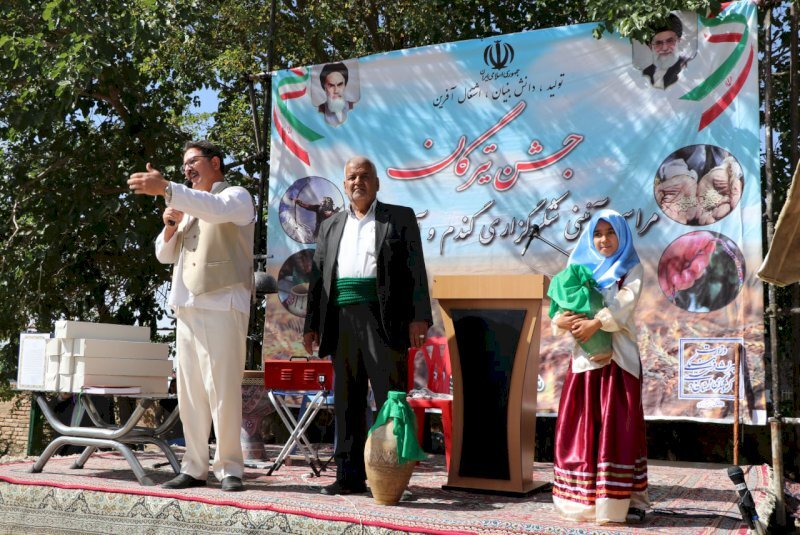Ancient festival of Tirgan held in central Iran

TEHRAN – on Wednesday, the ancient festivity of Tirgan (also known as Jashn-e Tirgan) was held in Farahan county of Markazi province, CHTN reported.
Every year in this region, the Tirgan festival, one of the most important festivals of the ancient Iranians, is held on the first day of summer as a symbol of miracles, blessings of agriculture, and water protection, the provincial tourism chief Mostafa Marzban said.
A selection of top farmers from the region was honored during the ceremony, the official added.
Tirgan is a time-honored Iranian festival usually observed as a rain festival. Tiragan, along with Noruz, Yalda Night and Mehregan are amongst feasts widely celebrated in the ancient land.
Currently, the summer festival is mainly celebrated by Iranian Zoroastrians. The celebration is widely attested by historians such as Abu Saeid Gardezi, Biruni, and Al-Masudi, as well as European travelers to Iran during the Safavid era.
The Tirgan festivity refers to the archangel, ‘Tir’ (meaning arrow) or ‘Tishtar’ (lightening), referring to thunderstorms that bring much-needed rain that boost harvest and avert drought.
The ancient legend of the Tir (arrow) refers to “Arash of the swift arrow” or ‘Arash the archer’ (Arash-e Kamangir).
According to the Zoroastrian calendar, every thirty days of the month carries a name. The thirteenth day of the month of Tir on the Persian calendar (June 22 - July 22) is named after the respective month, Tir.
Legend has it that Arash was the best archer in the Persian army. He was selected to settle a land dispute between Persia and Turan (present-day Central Asia).
When the kings of the two lands - Manouchehr and Afrasiyab - decided to settle their dispute and set a permanent boundary between Persia and Turan, they arrived at a mutual understanding that Arash should climb to the tall Mount Damavand’s peak, and from there shoot an arrow toward the east. Wherever his arrow landed, they agreed, would determine the boundary between the two kingdoms.
Arash shot his arrow (Tir) on the 13th day of the Persian month of Tir, which fell on the banks of the Jeyhun (the Oxus) River. Thus, the borders of the two countries were marked.
Legend has it that as soon as the border dispute was settled, rain began pouring down on both lands, which had been suffering from an eight-year drought.
Thus this day, the 13th of Tir (July 4th) is celebrated as the Festival of Rain.
It is customary for Zoroastrians to tie rainbow-colored ribbons around their wrists for ten consecutive days and toss the ribbons into a stream on the day of the festival.
The Festival of Rain is celebrated by people dancing, singing, reciting poetry, and serving delicacies such as spinach soup and ‘sholeh zard’ (saffron-flavored rice pudding).
ABU/AFM
